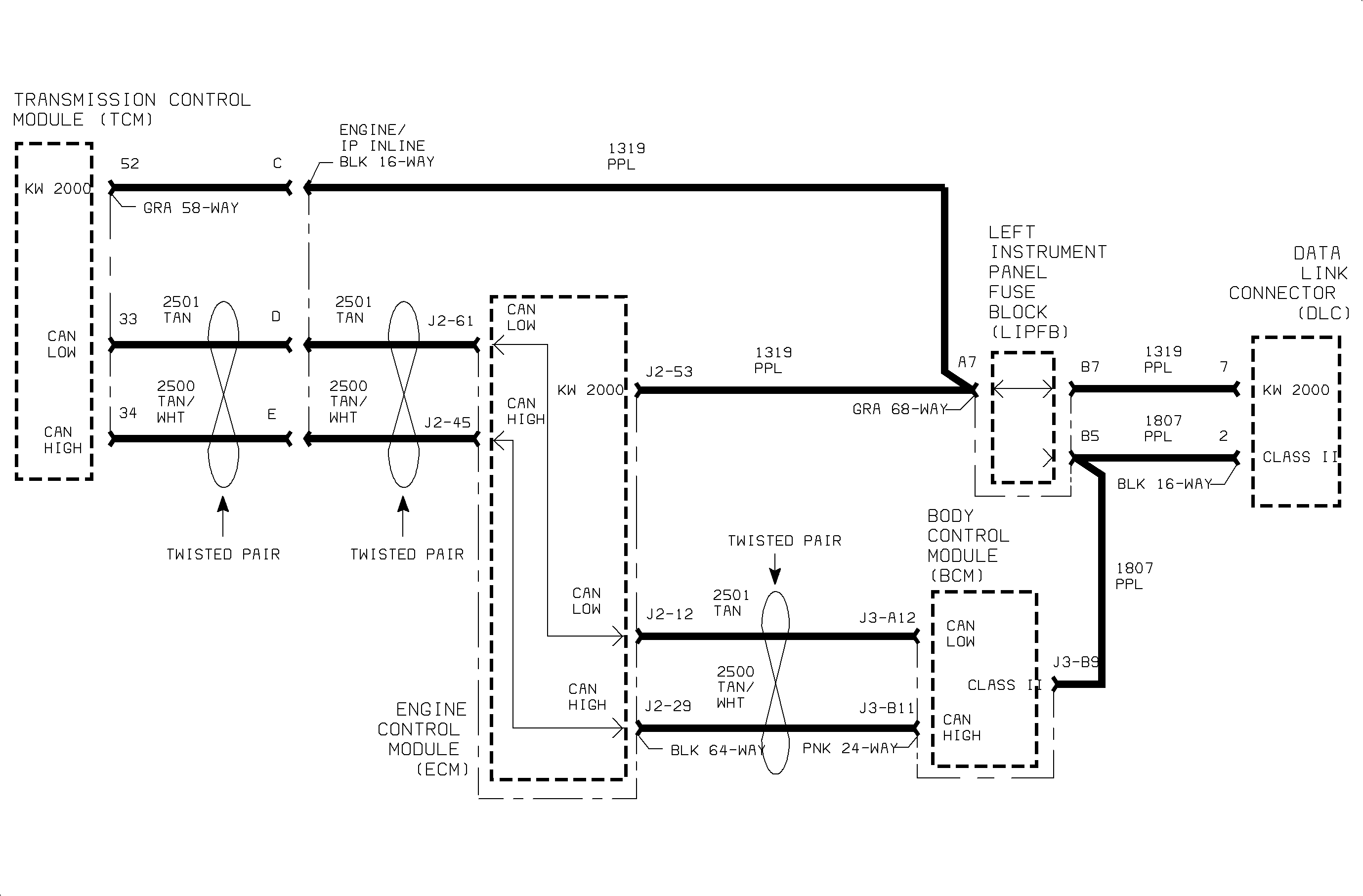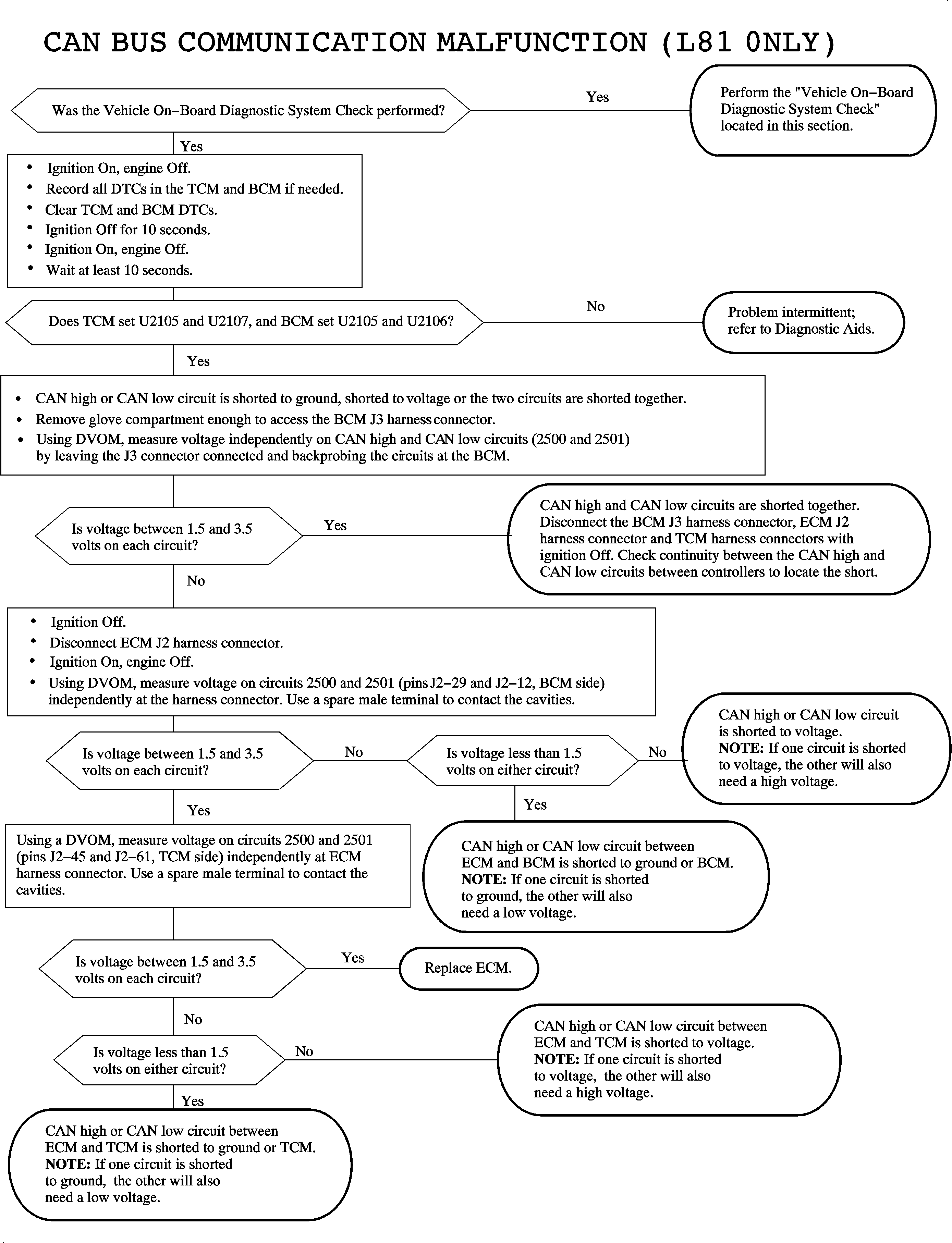
Circuit Description
The engine control module (ECM), transaxle control module (TCM) and body control module (BCM) communicate normal mode messages over the controller area network (CAN) link CKTs 2500 and 2501. Each controller on the CAN link uses a variable pulse width modulated square wave consisting of logic "0s" and logic "1s". A logic 0 is denoted as CKT 2501 at 1.5 volts with CKT 2500 at 3.5 volts resulting in a difference of 2 volts across the circuits. A logic "0" is denoted as both CKTs 2500 and 2501 at 2.5 volts resulting in a difference of 0 volts across the circuits.
State of health messages are sent from each CAN controller on the link when the ignition is turned On as well as during normal vehicle operation. These messages allow the BCM, ECM and TCM to know that each controller on the link is functioning correctly. The ECM monitors the CAN link for low and high voltage faults. All controllers on the CAN link monitor each others messages and can set a DTC if information is not received. U2103 sets when the ECM detects fewer controllers communicating on the CAN bus than what is has programmed in memory.
Conditions for Setting the DTC
DTC U2103 will set if the ECM detects fewer controllers (using controller IDs) on the CAN link than it has programmed in its master configuration list when:
| • | The condition exists for longer than 25 seconds. |
| • | The engine is running. |
DTC U2103 diagnostic runs continuously with engine running.
DTC U2103 is a type B DTC.
Diagnostic Aids
DTC U2103 may set along with U2106 or U2107 in the ECM if the TCM or BCM is not communicating on the CAN link. DTC U2103 does NOT indicate that the ECM is programmed incorrectly since the BCM and TCM are equipped on all ECM V-6 applications.

